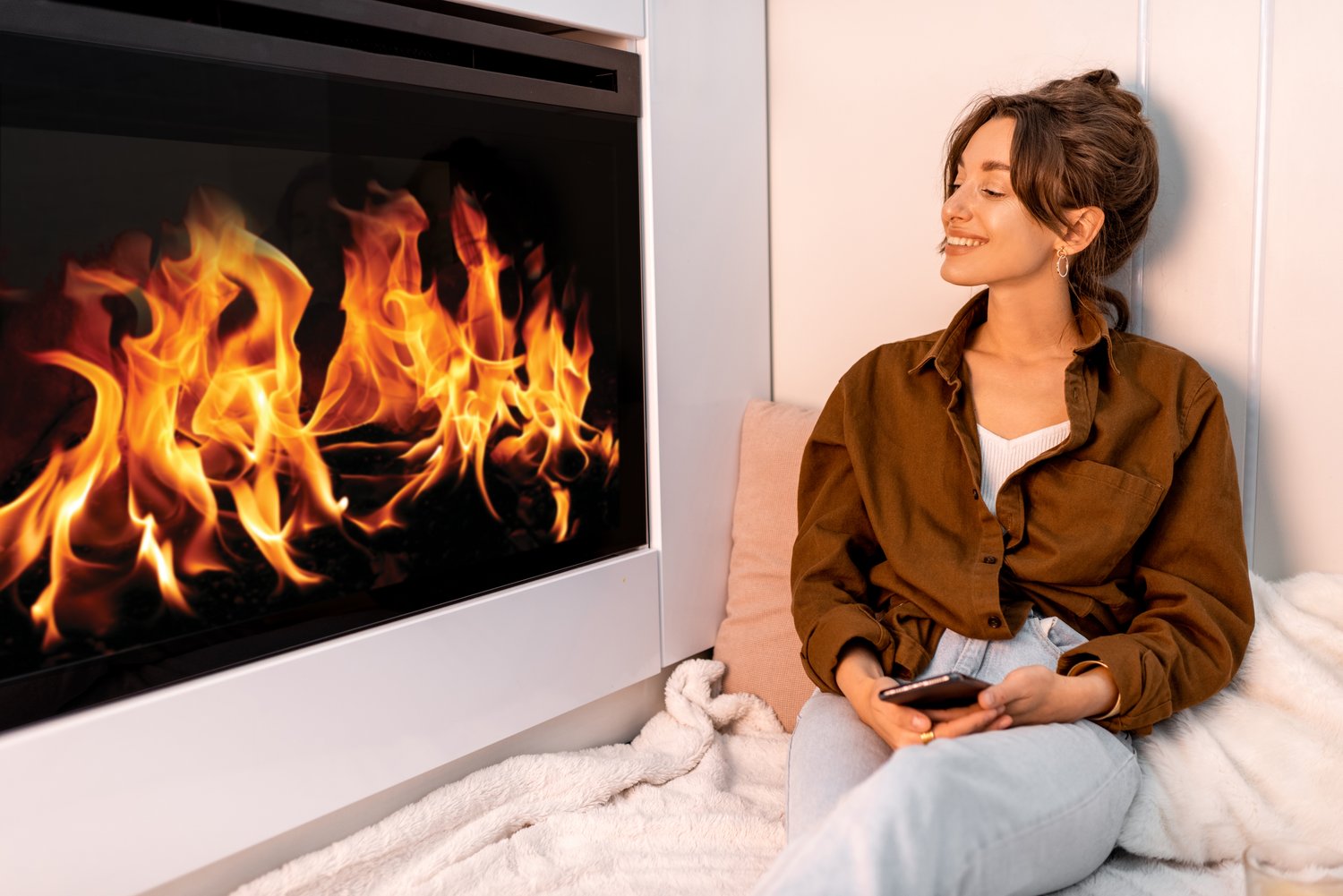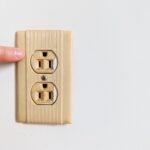Is your electric fireplace failing to provide the cozy warmth it’s meant to deliver? Understanding why your fireplace isn’t heating can save you both time and frustration. Electric fireplaces are a convenient, modern alternative to traditional fireplaces, but like any electrical appliance, they can encounter issues. This article delves into the core reasons behind why your electric fireplace might not be heating and offers practical troubleshooting steps to get it back to delivering that comforting warmth.
- Discover common causes such as power supply issues and thermostat misconfigurations that can disrupt heating effectiveness.
- Learn how to inspect your fireplace for power and component malfunctions impacting its performance.
- Gain insights into identifying and addressing heating element failures to restore your fireplace’s functionality.
- Understand essential thermostat and control settings adjustments for optimizing heating efficiency.
As you explore these troubleshooting steps, you’ll be better equipped to maintain your fireplace’s performance and know when it’s time to consult a professional. This comprehensive guide ensures you can address many common issues, ensuring a warm and inviting home environment.
Understanding Why Is My Electric Fireplace Not Heating? Troubleshooting Element Issues
Electric fireplaces are a convenient source of warmth and ambiance, but when they stop heating, it can be frustrating. Understanding the common causes that prevent them from heating effectively is crucial to resolving these issues swiftly. Several factors can interfere with your electric fireplace’s ability to generate heat, among which power supply issues and thermostat settings are prominent.
Check that your power supply is intact. A disrupted electrical supply can impede the normal functioning of your fireplace. Investigate if your circuit breaker has tripped or if there is a problem with the electrical outlet. Additionally, examine the connection to ensure there are no loose wires that could cause an interruption.
Thermostat settings are another common factor affecting the fireplace’s performance. If set incorrectly, the fireplace might not produce the desired heat levels. Ensuring that your thermostat is functional and set to the correct temperature can significantly improve heating efficiency.
Other potential issues could stem from faulty components within the fireplace. Internal components like the heating element and control circuits may wear down or malfunction over time, impacting heat output. Understanding the roles these components play can assist in identifying and addressing potential problems more effectively.
Power Supply and Component Checks
One of the initial steps in troubleshooting your electric fireplace is verifying the power supply. Electrical issues are sometimes straightforward, but can greatly impact the heating capabilities of your fireplace. Start by ensuring that the fireplace is plugged in properly and receiving power.
A tripped circuit breaker could be responsible for your fireplace not working at all. Examine your home’s breaker box to identify if the corresponding switch for your fireplace requires resetting. If the breaker trips repeatedly, further investigation might be needed to uncover underlying electrical faults.
In addition to the power supply, focus on component functionality. Components such as fuses, fan motors, and switches can fail over time. Inspect these elements for visible damage or wear. A blown fuse might be a simple replacement job, restoring your appliance to full functionality.
If your electric fireplace has an onboard diagnostic system, utilize it to detect component malfunctions. These systems provide error codes that guide you in identifying specific faults, making repairs more targeted and efficient.
By methodically going through these checks, you can identify and possibly resolve some of the common issues that affect electric fireplaces, ensuring that you restore warmth to your space effectively.
Addressing Heating Element Failures in Your Electric Fireplace
When your electric fireplace is not providing adequate warmth, one common culprit could be the heating element itself. Over time, heating elements may degrade and fail, leading to diminished performance. To address these issues, it is crucial to first diagnose the problem accurately.
Start by disconnecting the power supply to ensure safety before inspecting the inner components. Look for visible signs of damage or wear on the heating element. If there are no apparent issues, you might need to use a multimeter to test the element’s continuity. A lack of continuity usually indicates a fault requiring repair or replacement.
When repairing or replacing the heating element, refer to your electric fireplace’s manual to ensure compatibility with replacement parts. If a new heating element is necessary, opt for energy-efficient models to maintain lower operational costs. Efficient elements not only prolong the lifespan of your electric fireplace but also contribute to overall energy savings.
Reassemble the unit carefully, ensuring all components are securely connected before restoring power. If you are uncertain about any steps in this process, it may be wise to consult a certified technician to prevent further damage or ensure proper installation.
Thermostat and Control Settings: Essential Adjustments for Optimal Heating
Proper thermostat and control settings are vital for the optimal performance of your electric fireplace. Incorrect settings can significantly impact heating efficiency, leading to increased energy consumption without the desired warmth.
Begin by checking the thermostat settings. Ensure it is not set too low, which might prevent the fireplace from activating the heating element effectively. Adjust the thermostat incrementally, observing the changes in the appliance’s performance.
Besides the thermostat, examine other control settings, such as timer functions and heat level adjusters. Some electric fireplaces feature eco modes or energy-saving settings that can be beneficial for maintaining desired warmth without excessive power use.
Ensure you are familiar with these options by consulting your appliance’s user manual. Adjust your settings based on room size, desired heat levels, and the time of operation for better control over your electric fireplace’s efficiency.
If making these adjustments doesn’t resolve the issue, it may indicate a more complex problem requiring expertise. Proper thermostat and control calibration not only enhances comfort but also prolongs the appliance’s lifespan and energy efficiency.
When Professional Help Is Needed: Consulting an Expert on Electric Fireplace Troubleshooting
Electric fireplaces offer a convenient and efficient way to warm up a living space. However, there are times when heating issues might persist despite your best troubleshooting efforts. Understanding when to turn to a professional can save you time and prevent further complications.
If your electric fireplace remains cold after addressing basic issues, such as ensuring proper power supply and adjusting thermostat settings, it may indicate a more complex problem. Faulty wiring, malfunctioning heating elements, or issues within the internal circuitry are potential culprits that often require specialized attention.
Irregular heating patterns or unusual noises can also signal that it’s time to consult an expert. These symptoms might point towards deeper electrical problems that professional technicians are equipped to diagnose and repair efficiently.
Seeking professional assistance is particularly crucial if your electric fireplace is still under warranty. Attempting to fix it yourself can void warranty terms, risking coverage for future issues. Professionals will have the necessary tools and knowledge to perform repairs without affecting the warranty.
Additionally, certified technicians can conduct a comprehensive inspection of your fireplace, ensuring all components function correctly and are safe. This approach helps maintain optimal performance and safety standards, extending the lifespan of your unit.
In conclusion, if troubleshooting doesn’t resolve the heating issues, consult a professional to ensure your electric fireplace continues to operate efficiently and safely. Their expertise can be invaluable in maintaining comfort and reliability in your living space.
Electric Fireplace Troubleshooting FAQs
What should I check first if my electric fireplace isn’t heating?
Ensure the unit is plugged in securely and the power switch is turned on.
How can I tell if the heating element is faulty?
If there’s no heat despite the fan running, the heating element might be defective and should be inspected.
What role does the thermostat play in heating issues?
An incorrectly set thermostat can prevent the unit from heating properly. Adjust the thermostat to the desired temperature.
Can I repair a heating element myself?
If you’re comfortable, you can attempt a repair, but professional assistance is recommended for safety.
When should I contact a professional for help?
If basic troubleshooting fails or if you’re unsure about handling electrical components, consult an expert.





